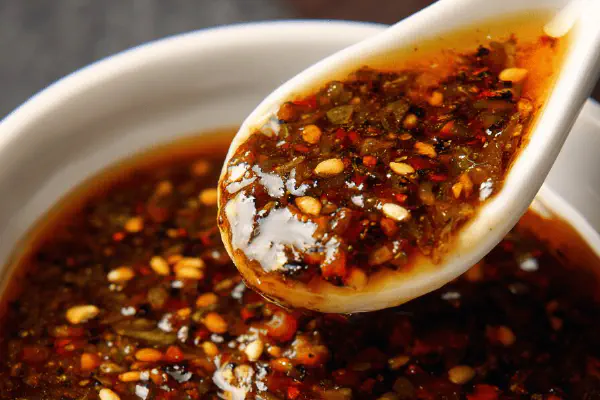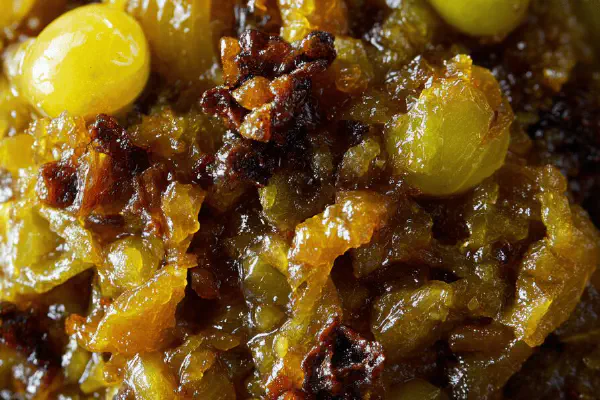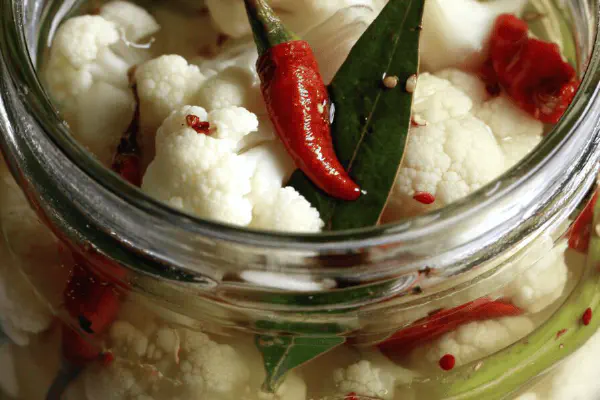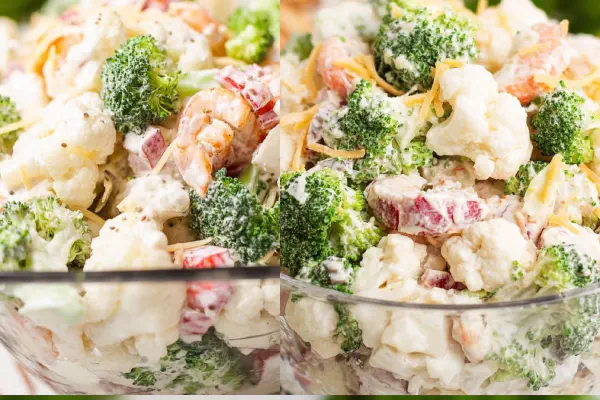Hoisin Mustard Sauce Remix

By Emma
Certified Culinary Professional
Ingredients
- 135 ml (1/2 cup plus 1 tbsp) hoisin sauce
- 50 ml (3 tbsp plus 1 tsp) avocado oil
- 25 ml (1 tbsp plus 2 tsp) grainy mustard
- 45 ml (3 tbsp) soy sauce
- 15 ml (1 tbsp) maple syrup
- 30 ml (2 tbsp) water
- pinch salt and freshly cracked black pepper
About the ingredients
Method
- Gather all ingredients at room temp for easier emulsification.
- In a medium bowl, pour hoisin sauce and grainy mustard. Whisk gently just to combine — breaks clumps without losing texture.
- Add soy sauce and maple syrup. Mix till glossy dark sheen. The aroma should hit sweet umami.
- Slowly drizzle in avocado oil while whisking fast in circular motion to emulsify. You want a velvety texture, not oily separation.
- Pour in water little by little while whisking, adjust consistency. Should coat the back of a spoon but flow easily.
- Season with salt and cracked pepper. Taste constantly—hoisin varies in saltiness; adjust accordingly.
- Let sit 5 minutes at least. Mix again before serving. Specks of mustard grain and glossy swirls should be visible.
- Serve immediately with Chinese fondue or grilled foods. Store covered in fridge up to 3 days; bring to room temp before use.
Cooking tips
Chef's notes
- 💡 Gather all ingredients room temp. Cold oil or sauce resists emulsification, breaks fast. Whisking slow, circular motions are key. Add avocado oil dropwise. Fast pouring splits sauce; see oily droplets separate. Resting five minutes thickens, flavors meld. Watch gloss on surface, dark caramel hue signals readiness. Grainy mustard clumps break if whisk too hard early; start gentle. Water adds control. Add little. Adjust so sauce coats but still drips, not watery. Salt last; hoisin and soy vary salt. Fresh cracked pepper brightens, powders dull it. Keep lemon juice or rice vinegar ready for tweaking sweetness or salt.
- 💡 Break clumps in mustard first, gentle whisk. Texture matters—no puree smoothness here. Oil swirls show if emulsified or not. Too quick, sauce splits. Use a fork or balloon whisk for better air incorporation, swirl continuously. Drizzling oil slowly; key step. Add soy and maple syrup after initial mix for glossy sheen and aroma. Smell test: sweet umami should hit distinct. Don’t rush water addition; texture goes from too thick to runny fast. Toss salt and pepper at the end. Rest sauce to let taste marry. Visual cues better than timers here. Thickened sauce glistens, coats spoon evenly, speckled with mustard grains.
- 💡 If hoisin is thick, thin with water or light soy sauce, never extra oil; oil balance ruins texture fast. Maple syrup substitution honey; earthier maple more stable, less floral. Grainy mustard swaps: coarse whole seed mustard for crunchier bursts. Soy sauce alternatives: tamari gluten-free but watch salt. For saltiness issues adjust lemon juice or rice vinegar dropwise; acidic cuts sweetness. If sauce splits, remix fast with whisk or fork. Stored in airtight jar refrigerated, use within 3 days. Bring to room temp before serving to loosen texture if too thick or pasty. Whisk again before use for consistency.
- 💡 Avoid overheating raw sauce. No cooking preserves bright sharpness and fresh tang. Over-mixing or fast oil addition breaks emulsion; visible oily droplets separate quickly. Texture changes fast. Watch for glossy, thickened look, tactile feedback on spoon. Sauce should cling but drip easily. Specks of mustard grain stay visible, don’t lose rustic feel. Visual gloss deeper dark caramel not shiny smooth. Add water slowly. Multiple small additions better than splash. Resting helps flavors settle and sauce firm up slightly. Salt adjusts last because hoisin and soy salt varies. Fresh cracked pepper at the end accentuates flavors.
- 💡 Whisking technique matters more than time. Slow is better. Grainy mustard flavor bursts; coarse mustard for crunchier version. Avocado oil preferred for mild buttery note; prevents thin slick feel found in canola. Maple syrup earthier than honey, less floral, blends well savory layers. Keep substitutions handy; lemon juice or rice vinegar for acidity balance or too sweet. Rest sauce before use, gloss signals. Use sounds and aromas – slow whisking makes quiet tough sauce; fast whisk causes oils to break apart, sizzle of oil separate. Visual cues key – darker gloss, speckled with mustard grain. Season carefully; hoisin salt differs.
Common questions
Why does sauce break?
Usually adding oil too fast. Whisk slow circular. Oil drips separate if rushed. Start gentle. Add dropwise. Cool ingredients help emulsify; cold resists mixing. Stir constantly, watch texture change. Don’t panic, remix quick with fork fixes usually.
Can I swap maple syrup?
Honey works but sweeter and floral—you lose earthiness. Agave or brown rice syrup okay too but flavor less deep. Syrup controls sweetness and viscosity; adjust carefully. Lemon juice or vinegar add brightness if too sweet. Maple better for balance, stability.
How to store sauce?
Airtight jar fridge only. Keep up to 3 days max. Sauce thickens overnight; bring to room temp before serving to loosen. Whisk before use if separated or thick. Avoid leaving out long — no preservatives here. Make fresh batch if off smell or texture.
What to do if too salty?
Add lemon juice or rice vinegar dropwise to cut saltiness, bring balance. Also add water slowly for dilution but don’t overwater—lose texture. Maple syrup adds earthiness that masks salt. Check soy and hoisin brand salt levels before mixing; adjust salt last after tasting.



